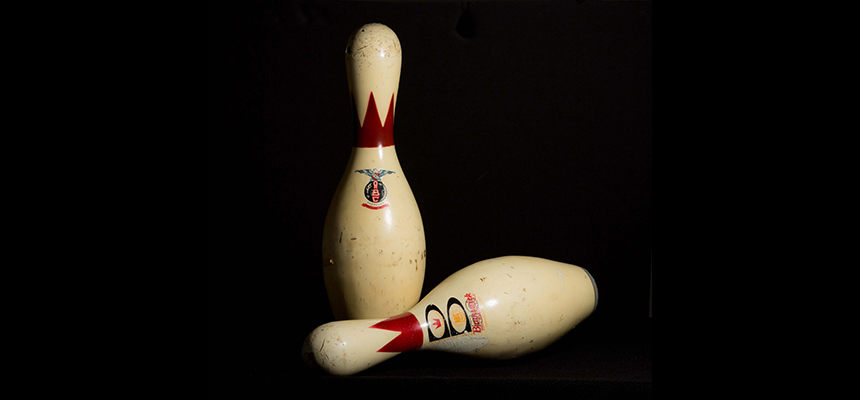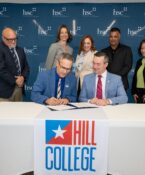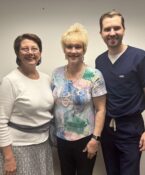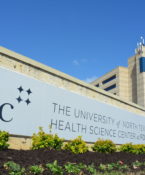UNTHSC history: Tavener bowling pins
By Alex Branch

For almost 50 years, UNT Health Science Center has preserved two scuffed bowling pins.
The vintage pins recall a throwback to the 1950s and 60s, when people in vertically striped shirts and rented suede shoes flocked to bowling alleys on Friday nights.
But these pins hold a significant – and quirky – place in the history of Fort Worth’s oldest medical school.
The story starts with the opening of the Texas College of Osteopathic Medicine (TCOM) in 1970. Classes for the first 20 students were held among hastily arranged partitions on the fifth floor of the old Fort Worth Osteopathic Hospital at Camp Bowie Boulevard and Montgomery Street. A nearby garage apartment was the anatomy lab.
For the fledging medical school to succeed, its founders knew they needed more space — badly.
C. Ray Stokes, the college’s Director of Development, was the school’s first employee. His personalized license plate read “TCOM-1.” Stokes scoured Fort Worth but consistently found the new college priced out of all viable locations.
Then Tavener Playdium Bowling Alley came on the market.
Near the hospital along Camp Bowie, the Tavener alley was owned by Jackie Tavener, a former pro baseball player for the Fort Worth Cats, the city’s minor league team. The bowling alley, Stokes realized, was large enough for classrooms, laboratory space and offices.
Faculty and students rounded up 30 gallons of paint and spent a weekend turning the bowling alley into a medical school. Bowling lanes became classrooms and laboratories. The alley’s bar became the President’s Office, red carpeting still covering the walls.
The building was named the “Basic Science Building” but students and faculty knew it only as “the bowling alley.” Some students carried their medical books to class in bowling ball bags.
In 1973, the growing medical school affiliated with the University of North Texas (then called North Texas State University). New buildings rose. The bowling alley was demolished. Two bowling pins were kept as a keepsake.
Today, Texas College of Osteopathic Medicine is one of five schools on a 33-acre campus. A sixth school, the jointly run TCU and UNTHSC School of Medicine, is scheduled to open in 2019, pending accreditation. And the new Interdisciplinary Research and Education Building, scheduled to open in late 2018, sits on the grounds where the Tavener lanes once stood.
More than 2,000 students and 1,000 faculty and staff now learn and work at UNTHSC. The university prepares doctors, physician assistants, physical therapists, biomedical scientists, pharmacists and public health professionals to be health care providers of the future.
But the innovative spirit that once turned a bowling alley into a medical school remains.






Social media